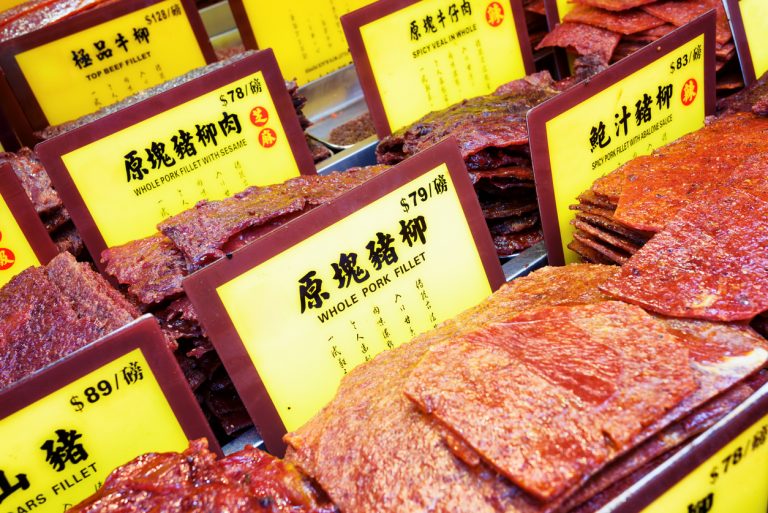African swine fever and the implications for China.
- African Swine Fever (ASF) is an extremely infectious viral disease which is highly fatal to infected pigs. It is estimated that 30-35% of China’s hogs have already been lost due to ASF.
- It is unlikely that China will be successful in controlling the ASF outbreak due to the nature of the virus, current controls and procedures, and the vast and diverse nature of the Chinese swine industry.
- There will a significant and sustained impact on the supply, and therefore prices, of pork and other protein substitutes over an extended period.
- Rising food inflation, increasing inflation expectations and potential social unrest will present significant challenges for Chinese authorities in managing both inflation and growth targets.
Merricks Capital recently co-hosted a series of industry summits in the US focusing on African Swine Fever. These summits brought together over 70 companies from the US meat and livestock industry to discuss the impact on commodity markets and the broader implications for inflation and Chinese economic policy.
AFRICAN SWINE FEVER AND THE CURRENT STATUS
African Swine Fever (ASF) is an extremely infectious viral disease which is highly fatal to infected pigs. It affects all age groups and types of pigs and there is no vaccine or treatment currently available.
ASF spreads easily by direct contact between pigs or indirectly by contaminated items including feed, feed ingredients, equipment, vehicles, clothing and footwear. It can also be spread through meat from infected animals, and vectors (such as some ticks, lice and flies).
The disease has generally been present in countries of sub-Saharan Africa and spread to Eastern Europe in 2007. ASF was discovered in Liaoning China in August 2018 and has since been found in every province in China. More recently, it has been reported in western Europe (September 2018), Mongolia (January 2019) and Vietnam (February 2019), where it has been spreading rapidly. Korea, Thailand, Philippines, and Taiwan are considered to be at high risk.
Traces of ASF have even been detected in undeclared pork products at Australian airports, although these illegally imported materials have not infected the local pork population.
CHINESE PORK MARKET FUNDAMENTALS
Pigs are a big deal in China. More than 50% of the world’s pigs are held there (approximately 720 million hogs) and the Chinese pork industry provides around 20% of global protein.
In China, pork meat is a key food source for consumers, representing over 60% of protein consumption. This compares with poultry at 25%, followed by beef at 8% and mutton 6%.
While backyard farms have declined in significance (from 74% of the pig population in 2000 to approximately 27% in 2015), the industry is still dominated by a large number of small producers and this makes it more difficult for authorities to monitor and control the spread of AFS.
It is unlikely that China will be successful in controlling the ASF outbreak. This is partially due to the nature of the virus itself, as well as lack of government transparency and controls and the vast and diverse nature of the Chinese swine industry.
IMPACT OF ASF
Official figures show that 950,000 pigs had been killed as at late March in an effort to halt the spread of the virus. The number of actual cases is difficult to determine due to possible underreporting, with estimates that as many as 90% of cases are not reported. This is partially due to inadequate levels of compensation to farmers and poor reporting processes.
The China Swine Association estimated in February that 30-35% of China’s hogs had already been lost due to ASF, representing around 200-300 million pigs. Losses in certain regions, such as Shandon and Henan, are likely to be even higher at 60%.
More significantly, the Chinese Ministry of Agriculture and Rural Affairs (MARA) in February said the number of sows were down 19%, which would translate into 136 million fewer pigs in 2019. This is significant because it means it will take several years to rebuild a breeding herd to enable the population to be re-established.
THE PRICE RESPONSE
The initial price response for a disease driven event such as ASF is complicated by the additional supply on the market as pigs are destroyed, which usually leads to price falls. Prices have also been moderated by a substantial increase in imports. January pork import volumes in February were up 7.9% on December levels and 31.6% over the previous year.
A further issue complicating the price response has been the implementation of US and Chinese trade tariffs which disrupted export demand of US pork into China.
These factors mean the price response has not been straightforward. Hog and pork prices rose in August last year when the first case of ASF was officially announced by Chinese officials, but then eased over the rest of 2018 and early this year. More recently, prices have again risen while Chinese import demand has also grown.
While there have only been moderate price increases so far, a more significant rally is likely over the medium to long term due to the magnitude of total losses and the decline in the breeding herd, which will require substantial effort to rebuild. The futures market is pointing to further price rises ahead, with the most active (June) hog futures contract up 26% in March to the highest since it started trading in late 2017.
Of course the price impact will not be limited to pork, as Chinese consumers are price sensitive and any cost increase will encourage them to substitute poultry and beef for pork products. This is already reflected in beef prices, which have been well-supported following the ASF outbreak, while poultry prices are also close to record levels.
Other commodities could actually see price falls. China consumes around 30% of the global soybean crop, including cooking oil and soymeal which is used for hog feed. A 30% drop in the Chinese hog herd, which translates into a 15% decline in the number of hogs globally, could be expected to have a considerable impact on soybean prices and we have begun to see a fall in Chinese soybean imports, down 39% in November and December from the previous year.
CONSIDERATIONS FOR CHINESE POLICYMAKERS
To consider the longer-term impact of ASF on China and the possible policy action, it is worth looking back to 2006, when the blue-ear pig disease claimed a million pigs. Retail pork prices rose 50% over the year to June 2007, while wholesale prices were up even more.
At that time, food prices accounted for nearly a third of the CPI, and rising pork prices were the biggest single influence on food prices. Food inflation peaked in early 2008 at around 23% before easing, resulting in a spike in CPI inflation above 8%.
A number of initiatives were introduced at the time including subsidies for pig production and food assistance to low-income families. The Chinese government also commenced a state-sponsored import program in 2008, which saw 480,000 tonnes of pork imported from the US and EU to stabilise prices and provide market support.
Many of these options could be used today. There are also access emergency reserves which can be accessed by the government, although these are small by existing requirements. They could also be contaminated which could exacerbate the problem.
The Chinese government has responded to the current AFS outbreak by asking farmers to replenish stock, but the banks in China have stopped lending to farmers due to the risk. Chinese land is state-owned and the banks can’t own the farmers’ land, so the only collateral they have is the pigs themselves. With limited government compensation for lost pigs, there is little incentive to expand the herd.
A ban on French poultry imports, in place since December 2015, has also recently been lifted in an effort to increase protein supplies overall and limit price increases.
In addition to the crisis for the pig industry itself and the challenges of managing the ASF outbreak, the disease presents a serious challenge for authorities in managing potential social unrest and the economy more broadly. It is likely that the impact on food inflation will be similar, if not more significant, than that caused by blue-ear pig disease in 2006-07. MARA said it expects pork prices to rise more than 70% year-on-year in the second half of 2019.
The slowing Chinese economy is currently presenting challenges, as authorities attempt to support growth while also managing high levels of debt and environmental concerns. A number of fiscal and monetary policy stimulus measures – such as fast-tracking infrastructure projects and cutting taxes and banks’ reserve requirements – have recently been introduced. While there have been some encouraging early indicators, a spike in inflation resulting from higher food prices could further dampen domestic demand and complicate the policy response.
Overall, there are a number of issues that the meat and livestock industry and financial markets need to consider in relation to AFS. Unlike other “price shock” events, the difficulty in resolving the ASF crisis and the loss of breeding herd means this event will likely to have a 3-5 year cycle and prices will remain higher for longer. Market volatility is also likely to be elevated for some time and industry participants will need to apply prudent price risk management strategies to limit earnings volatility. Perhaps more significantly for financial markets, the likely spike in inflation – expected in the second half of this year – will present considerable challenges for Chinese policymakers as they try to limit the negative impact of rising prices while meeting growth targets.
ABOUT MERRICKS CAPITAL
Merricks Capital has a 12-year track record across global investment markets, investing across the capital structure where there is the best risk-adjusted returns. The Merricks Capital Meat and Livestock Fund provides bespoke market solutions to help clients manage price risk in the US meat and livestock industry.



